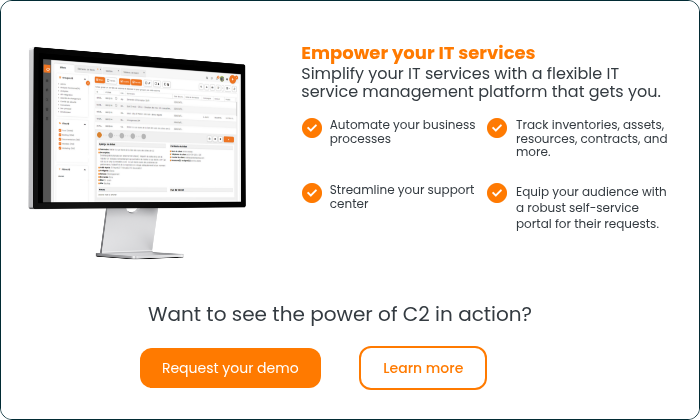ITIL service desk management offers best-practice solutions for clients and users in today's commercial environment. It generates standards for value, excellence, and problem resolution in IT administration, development, enterprise, function, and policy.
ITSM transforms the administration of individual technology silos into a perpetual best-practice solution, delivering IT-derived services that contribute to the organization's strategic goals. The corporate service desk is the focal point of ITSM projects, functioning as the technological face of the organization for customer interaction and providing essential IT process development solutions to customers.
ITSM solutions: creation and management
The ITIL service desk management system is well-modified by adoption of ITSM-procedures and must verify the following when seeking a solution that fits company requirements:
- Tracking and identification – Identifying, recording and regulating customer information, including introductory communications and those that follow, sales or other transactions, and other incidents, including whatever difficulties may emerge. Your service desk will identify problems within the system, by tracing the various and discrete phases of the transaction or issue in question. Not only will a record of what has commenced be provided, but also a resolution scenario based on what has transpired coupled with potential management applications to bring about a mutually satisfactory and successful outcome.
- Collaboration – Cloud computing has many uses for ITIL service desk management. Among the most prevalent :
- Cloud service desk outsourcing generates faster results than traditional models.
- Process automation improves productivity through quicker resolution of client problems.
- Use of ITIL best practices provide adaptable infrastructure, minimizing costly, time-consuming custom scripting.
- Flexibility of design and use for users’ specified real-time needs.
- Less disorder caused by operational redundancy, while substantially lowering the costs of upkeep.
- Storage options allow you to access any information you require in moments, without fail, helping you separate unresolved issues from those already completed.
Some tips to help you choose the right Service Desk tool for your organization:
- Analyze your specific needs: Identify the processes and technical support activities you want to improve or automate. For example, this may include incident management, problem resolution, service requests, changes, etc. Involve your teams concerned to get a complete overview of the needs.
- Evaluate essential features: Review the features offered by ITSM tools in the market. Make sure the chosen tool includes basic elements such as ticket management, request tracking, knowledge base, reporting dashboards, SLA management (Service Level Agreements), etc.
- Examine user-friendliness: Opt for a user-friendly and easy-to-use tool for your team. An intuitive interface and simple navigation will enable faster tool adoption and facilitate daily task management.
- Consider scalability: Think about the future of your company and assess whether the ITSM tool can adapt to your organization's growth. Choose a tool that provides stable update schedules with detailed change notes.
- Validate integration: Ensure that the service desk tool can integrate with other systems and software you already use within your company. This will enable better data synchronization and more efficient collaboration between different departments.
- Evaluate security: Data security is crucial. Check that the service desk tool offers robust security measures to protect sensitive information from your clients and your company.
- Consider technical support: Look for a provider that offers good technical support in case of problems or assistance needs. Responsive and reliable support is essential to minimize downtime and technical issues.





